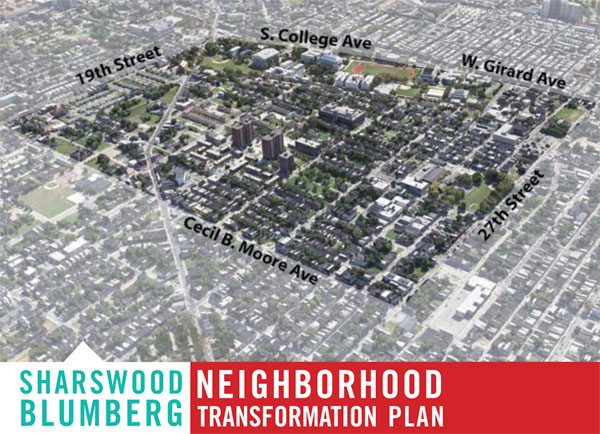
May 2, 2018; The Root
The president of the Philadelphia Housing Authority (PHA) is determined to make the Sharswood Blumberg neighborhood of North Philly an example of revitalization without gentrification. Kelvin A. Jeremiah, president and CEO of the PHA, is attempting to bring better schools, commercial business, green space, and community ownership all at once, while committing to not displacing original residents.
What are some best practices for community revitalization? Megan Hafner and Elizabeth Ramaccia declared this January that “the future of places big and small will not be determined by a singular leader or multinational corporation but rather by the people who live there.” They determined three elements of successful projects:
- Leadership development and capacity building
- Building a foundation of trust
- Shared vision
PHA’s plan is in the early stages, but it has the potential to succeed on all three counts.
The Sharswood/Blumberg Choice Neighborhoods Transformation Plan was launched in 2015, and is the largest single undertaking in PHA history, at $500 million. The plan acknowledges that the neighborhood was plagued by “highly concentrated poverty, drugs, truancy, illegal guns, and criminality” but engaged in a “planning process focused on assessing the underlying causes of the neighborhood’s distress, identifying community needs and strengths, articulating a vision for positive change and revitalization, and developing a realistic roadmap for moving forward to implement the community’s vision.” The plan involved dozens of community partners, including two resident councils from the public housing towers that were demolished, the YMCA, youth advocate programs, and the University of Pennsylvania.
Sign up for our free newsletters
Subscribe to NPQ's newsletters to have our top stories delivered directly to your inbox.
By signing up, you agree to our privacy policy and terms of use, and to receive messages from NPQ and our partners.
Revitalization depends upon several projects, including the major step of relocating the PHA offices from Center City to Blumberg. Jeremiah hopes that the new building, which includes mixed commercial space and offices for 400 PHA employees, will help bring in business. PHA also plans to develop a 10-block stretch of commercial real estate. Inga Saffron of the Philadelphia Inquirer expressed skepticism about this part of the plan, saying it has a “suburban mentality,” but others are more optimistic.
Another centerpiece of the plan is affordable housing. The PHA razed the Blumberg towers in 2016 and took ownership of 1,300 additional lots. Jeremiah has promised that the new housing built in these lots will be affordable to the original residents; Kia Gregory of The Root says that “the PHA has promised to restore new housing at Blumberg for all of the residents displaced who want to come back.” Jeremiah added, “The families who lived there when it wasn’t fashionable should be the beneficiaries of development, and we are not going anywhere.” (Debbie Thomas, a resident for decades, had a message for developers: “We plan on dying here.”)
But it’s not just about making the housing affordable; it’s about raising incomes and living standards in the neighborhood so that people want to live there and can afford to do so as housing costs rise.
One major way Jeremiah plans to enable this is through the newly reopened Roberts Vaux High School. It was closed along with 22 other schools, in 2013, in an effort to erase a $1.35 billion budget deficit. PHA bought the building from the district and gave it to Big Picture Learning, which had already opened a school in Philly in 2009. Vaux Big Picture is what’s known as an Innovation Network School. The model is a hybrid of a traditional public school and how many charter schools operate, an autonomous public school that’s part of the district and operated by a 501c3.
Lots of hopes are pinned on Vaux. It operates with longer school days and school years, smaller classrooms, small group mentors that stick with students through graduation, internship programs, college counseling, and more. Jeremiah told The Root that “just as a school can destabilize a community and permeate a community that is trapped in poverty, a school can also help break that cycle.” Big Picture CEO David Bromley has said the school will largely employ district teachers. “We believe that kids do best in school when they’re engaged…when they’re excited about what they’re doing and where they’re going,” he said.
There is not yet sufficient evidence to determine whether Blumberg really will live up to the hopes of PHA and community residents. Malcolm Burnley of Next City has said that “PHA will track residents’ feelings about the development over time, in partnership with the University of Pennsylvania.” Rents in surrounding neighborhoods are already on the rise, and students at Vaux are expressing positive feelings about their new school. A revitalized neighborhood that doesn’t displace longtime residents shouldn’t feel like such an extravagant hope, but the reality remains to be seen.—Erin Rubin











